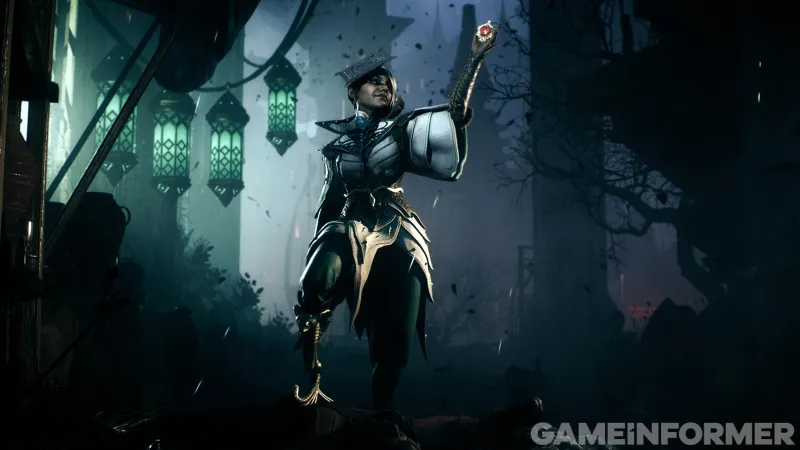
On a mellow winter evening in the month India’s capital shifted from Kolkata to Delhi in 1911, they came home. Light glinting off shirts and shorts, 11 young Indians who had fused football into the struggle for freedom from British rule found a place in the club they had made history for. Immortal 11, they had been called after becoming the first Indian team to win the IFA Shield in 1911. Thursday at Mohun Bagan ground showed the phrase has aged well.
“It was not just a sporting event,” said Debasish Dutta, the Mohun Bagan general secretary referring to come-from-behind 2-1 win in the final against East Yorkshire Regiment on July 29, 1911 through goals from Shibdas Bhaduri and Abhilash Ghosh. “Football, till then, was a sort of fashion for the comparatively enlightened lot among the Bengalee (sic) youth. Overnight, it turned into a passion,” Jaydip Basu has written in ‘Stories from Indian Football.’
Also Read | Key football highlights from weekend: Arsenal table-toppers in Christmas, Jim Ratcliffe completes Manchester United deal
Mohun Bagan’s triumph coincided with the Swadeshi movement, football historian Subhransu Roy had said in an HT article commemorating 100 years of the victory. “Barefoot football became a part of that practice. It became a Swadeshi form of football, which only the Bengalis excel in.” Continuing to play barefoot – only right-back Sudhir Chatterjee wore boots for Mohun Bagan in the final – was a legacy of 1911 and subsequently hurt India, according to Roy. But that was said with the wisdom of hindsight.
Coming days before young revolutionary Khudiram Bose was to be hanged and at a time of growing nationalistic fervour, beating five British teams in successive games meant more than winning a tournament. That the refereeing wasn’t always neutral and some Mohun Bagan’s amateurs were inconvenienced by leave not being granted by British superiors added fat to the fire. In the case of captain Shibdas Bhaduri – ‘Pichal Babu’ or the ‘Slippery One’ as he was called because of how he would fool defenders –there was also a last-minute transfer order.
That explains why ‘Amrita Bazar Patrika’ would write: “May God bless the Immortal Eleven of Mohun Bagan for raising their nation in the estimation of the Western people by their brilliant feat.” And why people and not horses pulled the carriages for a part of the victory march.
Within days of the win, a poem on Mohun Bagan by Karunanidhan Bandopadhyay appeared in the Bangla magazine ‘Manashi’ that spoke about a nation being awakened by some brave men. It is reproduced in ‘Shonar Frame-e Mohun Bagan’, a book in Bangla edited by Shibram Kumar that looks back at the epochal win. Bengalee, an English newspaper of the time, celebrated with a couplet titled ‘The Mohun Bagans’. On August 4, 1911, The Manchester Guardian wrote about a “team of Bengalees” who had defeated “crack teams of three British Regiments amidst the applause of 80,000 of their countrymen.” The scene after the win had beggared description, said The Times, London, “the Bengalees tearing off their shirts and waving them.”
“There! A precedent,” said author Debarati Mukhopadhyay looking in the direction of Sourav Ganguly after mentioning the shirts. This was after the former India captain and Mohun Bagan cricketer had spoken of how special a first-time achievement was.
Galvanised by Sailendra Nath Basu, a former player who became secretary in 1900, Mohun Bagan had ended the title-drought of the first 15 years with the 1904 Cooch Behar Cup. They won it again, notched up a hattrick of Trades Cup titles and beat Gordon Highlanders to win the Lakshmibilash Cup in 1909 which was also the first time they were allowed to play the IFA Shield. Only one Indian club was allowed to participate in what was touted as the FA Cup’s equivalent. Mohun Bagan’s first two attempts ended early before it all came together.
A goal from Abhilash Ghosh, brother of nationalist and philosopher Aurobindo Ghosh, and two from Bijoydas Bhaduri took care of St Xavier’s in the first match. (Bijoydas Bhaduri was the elder brother of Shibdas Bhaduri. All five Bhaduri brothers had represented Mohun Bagan.) Against St Xavier’s, Mohun Bagan played with 10 because Chatterjee had not been given leave from the college where he taught. Brothers Bhaduri, outside left and inside left in the 2-3-5 formation who looked similar and often switched positions, had put Mohun Bagan 2-0 up when Rangers scored in the next match. Rangers got a contentious last-minute penalty but goalkeeper Hiralal Mukherjee saved. Bijoydas Bhaduri’s goal proved decisive against Rifle Brigade and as Mohun Bagan came within one game of the final, interest soared around the team and the tournament.
The semi-final against an army team from Middlesex ended 1-1 and Mohun Bagan won the replayed tie 3-0. Special trains and steamers had to be run as people from eastern India wanted to watch the final. The ground where the final was to be played – not far from where Mohun Bagan are now – was overflowing and most people could see nothing of the match. So, they kept their eyes peeled on the sky because kites were being flown to convey the score.
Algerian players staking professional careers in 1958 to form a national team in exile, FC Barcelona in the time of Franco and the Austria-Germany game of 1938 which was supposed to be a celebration of Nazi prowess but turned out differently are some examples of making a political point through football. Even if they didn’t want to, even if they were just footballers who wanted to win a tournament, Mohun Bagan had made one decades earlier. When will that come down, an elderly man had asked Chatterjee after the final pointing to the Union Jack. Barring the Bhaduri brothers and left-back Bhuti Sukul, all died in independent India.
It was also an example of how sport broke down rigid social, economic even religious barriers. Chatterjee was Christian, Sukul was not a Bengali though his family had lived in the state for generations. The team had a college dropout, lower level government employees united by a passion with those who read at prestigious institutions and would have successful professional careers. Chatterjee taught at Cambridge, Ghosh was a top executive in a tea firm and Jatindranath ‘Kanu’ Ray, the outside right, became a DIG in 1948.
After the great win came the long drought: Mohun Bagan’s next IFA Shield came in 1947 and it wasn’t till 1939 that they won the Calcutta league. But a marker had been set: Mohun Bagan were runners-up in the league four times between 1916 and 1929 and played the final of the IFA Shield and Rovers Cup in 1923.
Nearly 14 foot long and six-and-a-half feet tall, the stone dust and fibre reinforced polymer sculpture took cousins Ratan Haldar and Priyabrata Haldar and Sanjib Mondal over two months to create. Mohun Bagan supporters, this has been a labour of love, said Ratan Haldar. One that has also given them a lot of confidence, he said. “We would like to sculpt Dada waving his shirt.”








